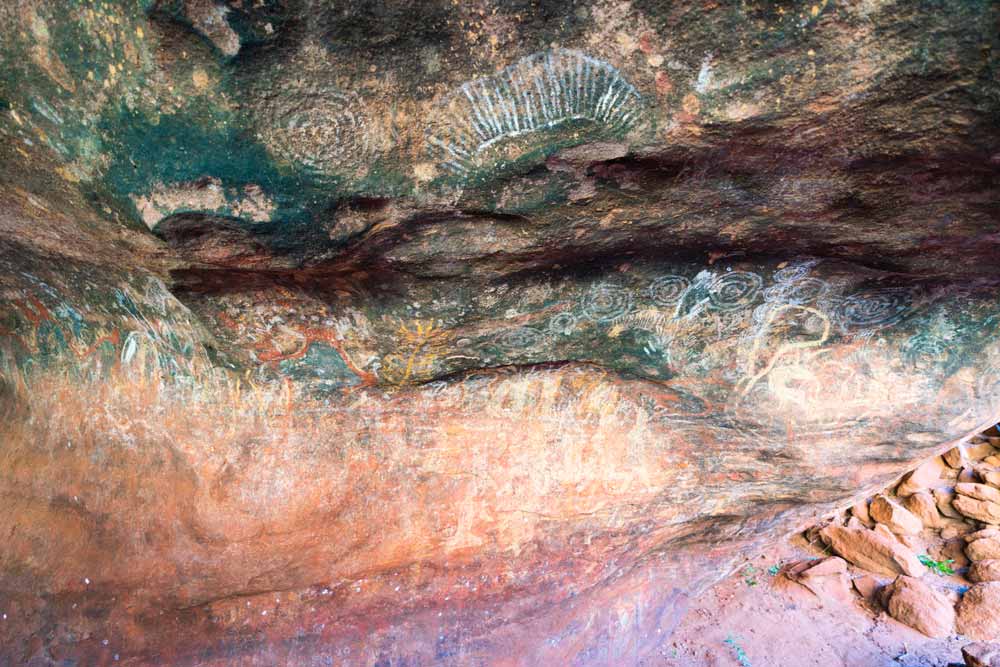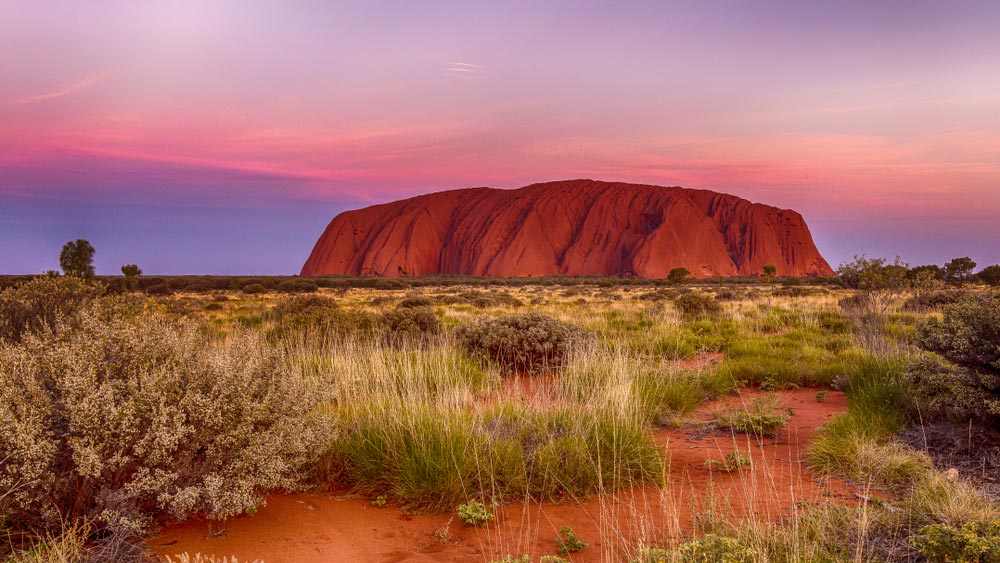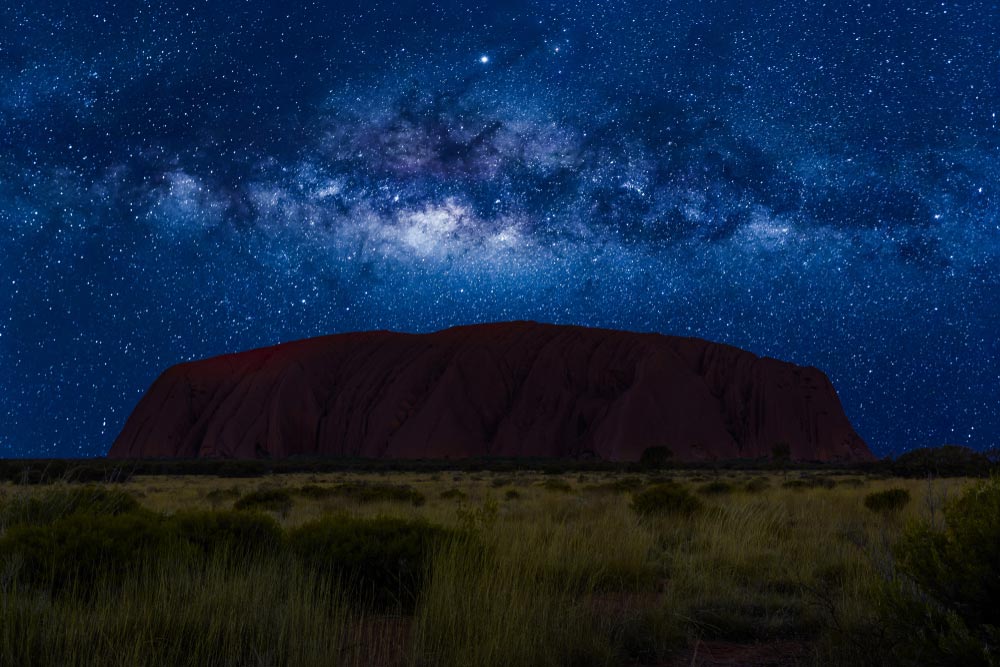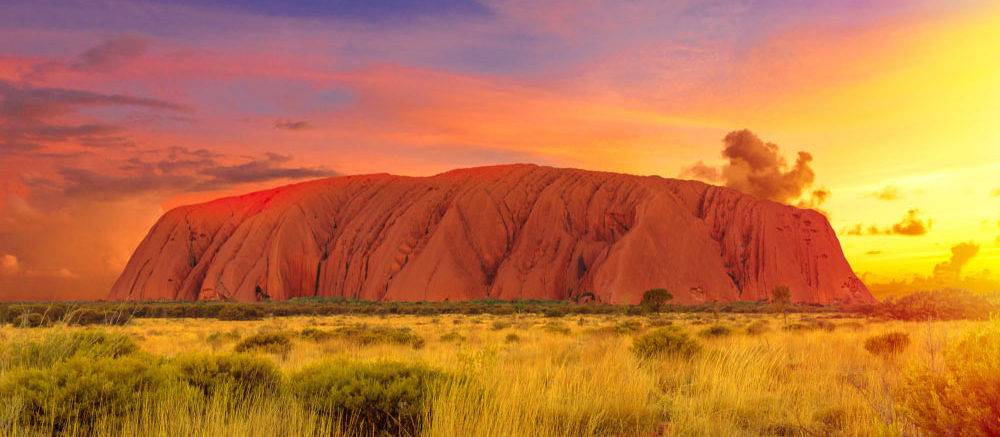Welcome, wanderlust seekers, to the magical land of Uluru in Australia! Prepare to be captivated by the rich history and breathtaking beauty of this iconic natural wonder. In this comprehensive travel guide, we’ll delve into the intriguing past of Uluru and provide you with all the essential information to plan an unforgettable adventure to this remarkable destination.
Part 1: Unraveling the History of Uluru
- Geological Marvels:
Uluru, once also known as Ayers Rock, is a colossal sandstone monolith that stands proudly in the heart of the Red Centre. Formed over millions of years, this geological marvel reveals the ever-changing story of our planet’s past. Imagine the ancient seabeds, geological upheavals, and weathering forces that sculpted this awe-inspiring rock formation. It began with layers of sediment deposited in an ancient inland sea. Over time, as the sea receded, the sand and silt were compressed and cemented, forming a thick layer of rock. Subsequent tectonic activity, including uplifting and folding, caused the rock to rise above the surface. Erosion then played a crucial role, gradually wearing away the surrounding rock layers and exposing Uluru’s distinct shape. The continuous action of wind, rain, and temperature fluctuations sculpted the rock into the awe-inspiring monolith we see today, with its smooth curves and striking vertical faces. Uluru stands as a testament to the forces of nature and the ever-evolving beauty of our planet.
- Aboriginal Cultural Significance:
Uluru holds profound spiritual and cultural significance for the Anangu people, the traditional custodians of the land. It is a sacred site that is deeply intertwined with their spiritual beliefs, ancestral stories, and cultural heritage. According to the Anangu, Uluru is not merely a rock but a living entity, inhabited by the spirits of their ancestors. It is a place of great power and spiritual presence, where ceremonies, rituals, and teachings have been conducted for generations. The rock formations, caves, and waterholes around Uluru are considered sacred sites, carrying stories and knowledge that are passed down from elders to younger generations. The Anangu’s connection to Uluru is deeply rooted in their identity, providing a sense of belonging and a foundation for their cultural practices. It is through their custodianship and respect for this land that the Anangu maintain their cultural traditions and ensure the preservation of their heritage for future generations. Uluru is a living testament to the rich and enduring indigenous culture that continues to thrive in Australia.

Part 2: Planning Your Uluru Adventure
- Best Time to Visit:
Uluru’s climate can be extreme, so it’s important to choose the right time for your journey. The cooler months from May to September offer pleasant temperatures and clear skies, making it ideal for outdoor exploration. Keep in mind that summer months (December to February) can be scorching hot like 40 degrees C hot (over 100f), and trust me, it feels hotter than that even, so plan accordingly if you decide to visit during this time.
- Getting There:
Uluru is located in the remote heart of the Northern Territory, Australia, but fear not, intrepid travelers! You can reach this natural wonder via a few different options. If you prefer convenience, fly to Ayers Rock Airport (also known as Connellan Airport) and then take a shuttle or rent a car to reach the park. Alternatively, if you’re up for a road trip, drive along the famous Stuart Highway, soaking in the vastness of the Australian outback.
- Where to Stay:
A variety of accommodation options cater to every traveler’s needs. From luxury resorts with stunning views of Uluru to cozy campsites under the starry sky, there’s something for everyone. The Ayers Rock Resort, located near the national park, offers a range of accommodations, dining, and cultural experiences. For a more immersive experience, consider camping at the Ayers Rock Campground, where you can wake up to the breathtaking sight of Uluru at sunrise.
Part 3: Experiencing the Wonders of Uluru
- Uluru-Kata Tjuta National Park:
Entry to the park is subject to an admission fee, which contributes to the conservation efforts and the preservation of this sacred site. As you enter the park, prepare to be amazed by the unique and striking landscapes that surround you. Take your time to explore the trails, viewpoints, and interpretive displays that provide insights into the geology, flora, and fauna of the area.

- Sunrise and Sunset Magic:
Witnessing the sunrise or sunset against the backdrop of Uluru is a truly magical experience. As the sun casts its golden hues upon the rock, it undergoes a breathtaking transformation, painting the sky with an array of vibrant colors. Find a spot at designated viewing areas or join a guided tour to make the most of these unforgettable moments.
- Cultural Experiences:
Immerse yourself in the living culture of the Anangu people by participating in various cultural activities. Join guided walks led by indigenous guides who share their ancestral stories and teachings.
- Uluru Base Walk:
Embark on the Uluru Base Walk, a 10.6-kilometer trail that encircles the rock. This self-guided walk allows you to get up close and personal with Uluru, marveling at its intricate textures and formations. Along the way, you’ll encounter sacred sites, waterholes, and ancient rock art, providing a deeper understanding of the spiritual significance of this land.
- Kata Tjuta (The Olgas):
Located just a short distance from Uluru, Kata Tjuta is another striking rock formation that demands exploration. Comprising 36 massive domed rocks, Kata Tjuta offers its own unique beauty and spiritual presence. Embark on the Valley of the Winds Walk, a 7.4-kilometer circuit that winds through the awe-inspiring gorges and reveals breathtaking panoramic views.
- Tjukurpa and Indigenous Cultural Centers:
Enhance your understanding of the indigenous culture by visiting the Tjukurpa and Indigenous Cultural Centers. These centers provide valuable insights into the Anangu way of life, their art, and the significance of their spiritual beliefs. Engage in workshops, listen to captivating storytelling, and appreciate the intricate craftsmanship of indigenous art.
Part 4: Essential Tips for an Unforgettable Uluru Adventure
- Respect the Cultural Significance:
Uluru is a deeply sacred site for the Anangu people, and it is crucial to respect their customs and cultural protocols. Follow designated trails, adhere to signage, and avoid climbing Uluru, as it goes against the wishes of the traditional owners. Instead, embrace the opportunity to connect with the land and its cultural heritage in a respectful and meaningful way.
- Stay Hydrated and Sun-Safe:
The Australian outback can be unforgiving, with scorching temperatures and intense sunlight. Stay hydrated by carrying ample water with you and wearing sunscreen, hats, and appropriate clothing to protect yourself from the sun’s rays. Take regular breaks in shaded areas to avoid heat exhaustion and enjoy the magnificent scenery at a comfortable pace.
- Capture the Moments:
Don’t forget to bring your camera or smartphone to capture the beauty and memories of your Uluru adventure. From the kaleidoscopic sunsets to the unique rock formations, each moment is a treasure waiting to be preserved. Just remember to put your device down from time to time and soak in the natural wonders firsthand.

- Embrace the Night Sky:
Uluru is situated in one of the world’s most remote areas, away from the glare of city lights. Take advantage of the pristine night sky by stargazing and witnessing the Milky Way in all its glory. The sheer number of stars will leave you in awe, igniting a sense of wonder and reminding you of the vastness of our universe.
You’re now equipped with a comprehensive understanding of Uluru’s captivating history and armed with a guide to plan an unforgettable journey to this extraordinary destination. From the geological wonders to the profound indigenous culture, Uluru offers an unparalleled experience that will leave you with lasting memories and a deep appreciation for the land and its custodians.
As you embark on your Uluru adventure, remember to approach this sacred site with respect, curiosity, and an open heart. Allow yourself to be immersed in the spiritual energy, natural beauty, and cultural richness that define this remarkable place. Safe travels, and may your journey be filled with wonder, enlightenment, and unforgettable moments in the heart of Australia.

